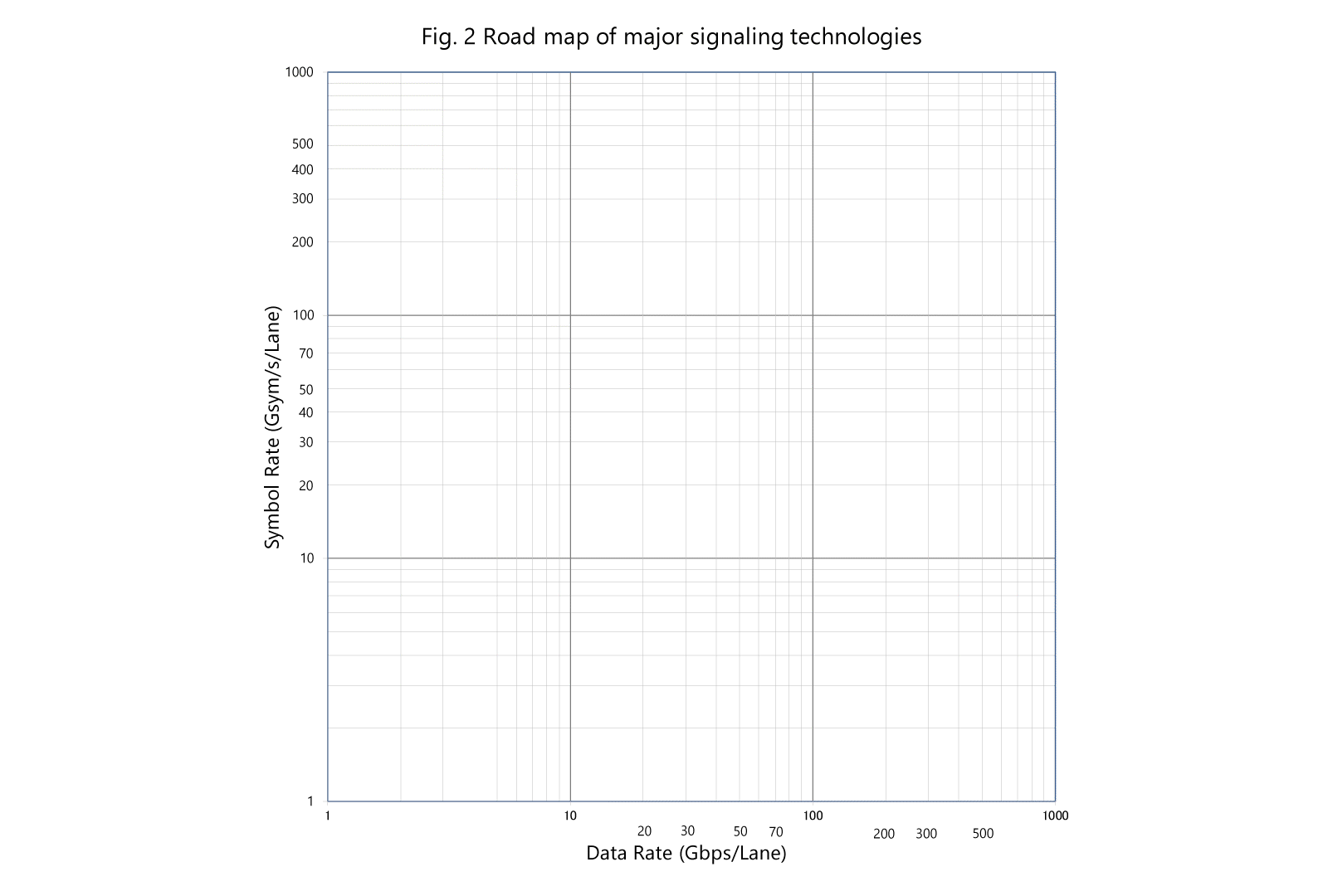What is PAMx (x=2,3,4…) Signaling Technology?
1. Introduction
Recently, a popular PAM signal transmission technology for high-speed signal interconnection in an enterprise application, its technology is becoming widely used for a consumer and automotive applications by using electrical or optical signal transmission. In this report, we will introduce the background of the increasing adoption of PAM signaling technology and its definition, as well as defining what PAM is. The relationship between PAM and the NRZ method, as well as its merits and demerits, will also be described.
2. Difference between NRZ/PAM2 and PAM4 (Pulse-Amplitude Modulation 4-levels)
NRZ(Non-Return-to-Zero)is a popular signaling technology that has 2 voltage levels to represent logical data (1 bit: “0” and “1”), as shown in Fig.1-1
NRZ is the same as PAM2 (Pulse-Amplitude Modulation 2-levels) in signaling technology. Therefore, hereafter, NRZ is described as NRZ/PAM2. On the other hand, PAM4 is a signaling technology where 4 voltage levels (2 bits: “00”, “01”, ”10”, and “11”)
are encoded in same unit interval (UI) resulting in 3 eye patterns, as shown in Fig.1-2


3. Advantage of PAM4
PAM4 has the advantage of doubling the data rate with respect to the same electrical characteristics (UI, Nyquist frequency, symbol rate) of an NRZ/PAM2 signal, as shown in Fig.1-1. When the data rate is doubled with an NRZ/PAM2 signal, the main electrical characteristics (UI, Nyquist frequency, symbol rate) will be more disadvantageous than the original signal, as shown in Fig.1-3 and Table 1.
Table 1 shows the advantages and disadvantages of ① NRZ/PAM2 compared to ② PAM4 and ③NRZ/PAM2 when the data rate is doubled.
4. Disadvantage of PAM4
If we switch a signal from NRZ/PAM2 to PAM4 while maintaining the same maximum voltage level of 400 mVpp, the four voltage levels of the PAM4 signal will nominally map to 400 mV, 266 mV, 133 mV, and 0 mV. Each of the three eye patterns, therefore, are 1/3 EH (Eye Height) compared to the NRZ/PAM2 signal, as shown in Fig.1-2. This makes the signal more susceptible to noise.
5. Comparison between PAMx (2, 3, 4, 6, 8, 16)
There are many variations of PAM (Pulse-Amplitude Modulation) signaling technology with various level counts. Table 2 is a comparison of some of these PAMx (2, 3, 4, 6, 8, 16) levels for reference only. The following is a calculation formula of the major performance items.
Symbol Rate (Gsym/s) = 1 / UI
Data Rate (Gbps) = Symbol Rate x Bits per Symbol (see Note 1)
Nyquist Frequency (GHz) = Symbol Rate / 2
Note 1 : Bits per symbol are dependent on the signaling technology, as shown in Table 2.
6. Why is PAMx becoming a popular signaling technology?
The upper limit of the technical data rate of NRZ/PAM2 seems to be around 100 Gbps, as shown in Fig. 2. If data rates higher than 100 Gbps use NRZ/PAM2, it will be difficult to secure profitability. Plus, all of the common transmission mediums (AOC, ACC, DAC, etc.) (see Note 2) have a similar limit. As a result, PAMx technology is an effective breakthrough in data rates above 50 Gsym/s/lane.
Note 2 : AOC (Active Optical Cable), ACC (Active Copper Cable), DAC (Direct Attach Cable)
Fig. 2 shows the signaling technologies used in popular standards. Each of the thin arrows on Fig. 2 shows a different PAMx signaling technology; associated standards that use the technology are indicated with individual markers. The large arrow marked “Technology Limit” shows the signaling technology limit of NRZ/PAM2 data rate. The large arrow marked “Technology Trend” shows the direction of possible new signaling technologies that could be a variation of PAMx or another signal modulation technology.

7. Conclusion
1) The signaling technology limit of NRZ/PAM2 will be up to around 100 Gbps (100 Gsym/s) per lane.
2) PAMx (3, 4, 8, 16) is an alternative signaling technology of NRZ/PAM2 to secure productivity.
3) For data rates above 200 Gbps per lane, a new variation of PAMx or other modulation technology must be used.
Related Products
CABLINE-CA IIP PLUS 64 Gbps/lane PAM4, 0.4 mm pitch, horizontal mating type twinax & micro-coaxial cable assembly
CABLINE-CAP 64 Gbps PAM4, 0.4 mm pitch, horizontal mating type micro-coaxial cable assembly
Contact us for more detailed information. [ www.i-pex.com ]
